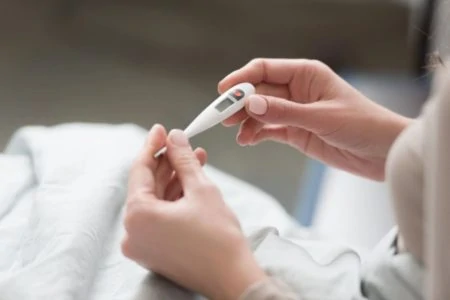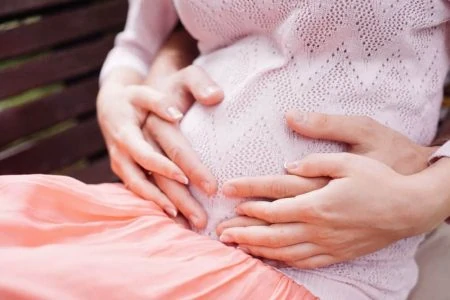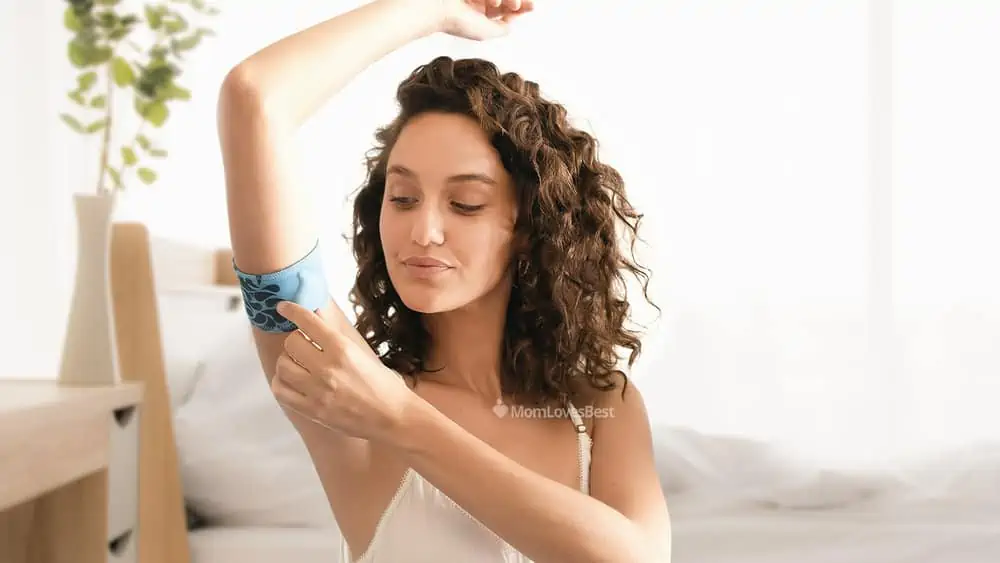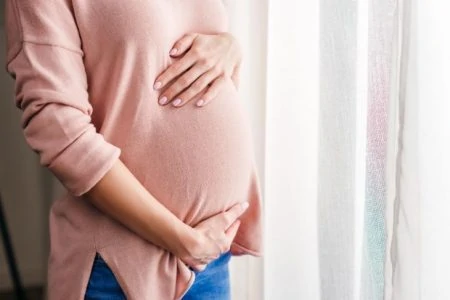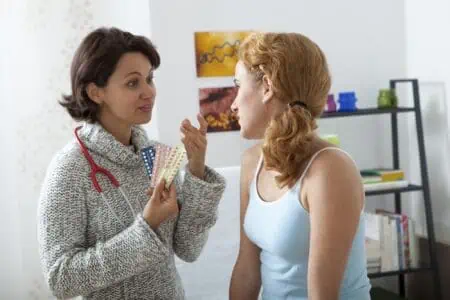Whether you are trying to conceive or natural family planning is your goal, accurate data is everything. A fraction of a degree can mean the difference between timing ovulation correctly or missing your window entirely.
As moms who have tracked countless cycles, we know the struggle of waking up at the same time every day to shove a thermometer in your mouth.
We tested the most popular fertility thermometers on the market to see which ones actually make the process easier. We evaluated them based on precision, memory features, app syncing, and screen readability in the dark.
From budget-friendly sticks to high-tech wearables, here are the best basal thermometers to help you understand your cycle.
- Accurate readings to 0.01 degrees
- Soft beep
- All-inclusive, good value package
- Impressive app functionality
- Suits irregular cycles
- 1-year warranty
- Comfortable to wear
- Reliable results
- Tracks temperature & sleep quality
- Peak temperature alert
- Ovulation chart included
- Memory recall
What Is Basal Body Temperature (BBT)?
Your basal body temperature (BBT) is your body’s lowest resting temperature. For the most accurate data, you must measure it immediately after waking up and before you do anything else (1).
Your temperature shifts the moment you sit up, drink water, or even cuddle with your partner. If you do any of these things before measuring, your daily reading will be incorrect.
The Science Behind the Shift
Before ovulation, your temperature usually sits between 97.0 and 97.7 degrees F. After you release an egg, your progesterone levels spike, causing your temperature to rise by a few tenths of a degree. It stays higher until your next period begins.
This shift divides your cycle into two distinct phases: the cooler follicular phase and the warmer luteal phase.
Tracking this shift confirms that ovulation has occurred. If you see a sustained temperature rise for three days, you can confirm ovulation and know that you are in the second half of your cycle.
Basal vs. Regular Thermometers
A basal thermometer looks like a standard fever thermometer, but the internal tech is different. Basal thermometers are significantly more sensitive (2).
Here is the main difference:
- Regular Thermometer: Measures to the tenth of a degree (e.g., 98.6 F).
- Basal Thermometer: Measures to the hundredth of a degree (e.g., 98.64 F).
Types of Basal Thermometers
Not all fertility thermometers work the same way. You generally have three styles to choose from based on your budget and lifestyle.
Consider these options:
- Standard Digital: These look like fever thermometers. You use them orally. They are affordable but require discipline to use at the same time every morning.
- Bluetooth/Smart: These are oral thermometers that sync with a smartphone app. They save you the trouble of manually charting your temp every morning.
- Wearable Sensors: You wear these on your arm or wrist while you sleep. They are the most expensive but the easiest to use. They are ideal for women with erratic sleep schedules or nursing moms who wake up often.
Product Reviews
We evaluated accuracy, comfort, app integration, and price to find the top tools for tracking your fertility.
iProven Digital Basal Body Thermometer
Best Digital Basal Thermometer
This model from iProven is a classic reliable workhorse. It does not need fancy apps or Bluetooth to do its job.
To ensure precision, this thermometer takes its time. It measures your temperature over roughly 60 seconds. While that feels long when you are sleepy, it ensures the sensor stabilizes for a highly accurate reading to the 1/100th degree.
A major plus for couples sharing a bed is the volume. Many digital thermometers have a piercing beep, but the iProven has a soft tone that alerts you without waking the whole room.
It comes with a physical paper chart and a guide. While many people prefer apps these days, having a physical chart helps you visualize the pattern without staring at a screen first thing in the morning.
The “last reading recall” is a lifesaver. You can take your temp, fall back asleep, and check the number later.
Pros
- High precision (0.01 degrees).
- Quiet beep won’t disturb partners.
- Comes with a protective case.
- Includes a paper chart for manual tracking.
Cons
- No backlight makes it hard to read in the dark.
- Takes about a minute to read.
Our Ratings
Tempdrop Wearable Basal Body Temperature Monitoring Sensor
Best Wearable Basal Thermometer
If you have irregular sleep schedules, work shifts, or wake up frequently to breastfeed, a standard oral thermometer will likely give you rocky data. Tempdrop solves this.
You wear this sensor in an armband near your armpit while you sleep. It continuously monitors your temperature throughout the night. Its algorithm filters out disturbances (like getting up to use the bathroom), giving you a smooth, accurate basal temp in the morning.
Using it is effortless. Put it on, press the button, and go to sleep. When you wake up, sync it to the app on your phone.
The app creates a chart for you, removing the human error of manual plotting. It is an investment, but for women with PCOS or difficult sleep patterns, it is the gold standard.
Pros
- Perfect for irregular sleepers and shift workers.
- Highly accurate algorithm filters out noise.
- Easy to wear; just put it on and sleep.
- Syncs automatically to smartphone.
Cons
- Significantly more expensive than oral thermometers.
- Armband can take some getting used to.
Our Ratings
iFertracker Smart Fertility Tracker
Best Body Basal Thermometer
The iFertracker is another wearable option, but it uses an adhesive patch under the armpit rather than an armband.
It is incredibly slim and lightweight. You barely notice it is there, which is great if you are sensitive to wearing jewelry or bands while sleeping. It records thousands of data points overnight to determine your true resting temperature.
In the morning, the device syncs via Bluetooth to the app. It has a flash memory of 240 hours, so if you forget to sync it one morning, your data isn’t lost.
It also acts as a basic sleep tracker, giving you insights into your rest quality. The downside is the ongoing cost of adhesive patches and the battery life, which tends to run short compared to other devices.
Pros
- Very comfortable and unobtrusive.
- Records continuous data for accuracy.
- Syncs easily to the app.
- Captures sleep quality data.
Cons
- Requires replacement adhesive patches.
- Battery replacement is frequent.
Our Ratings
Easy@Home Smart Basal Thermometer
Best Smart Basal Thermometer
If you want the benefits of a smart app without the high price tag of a wearable, the Easy@Home Smart Thermometer is a great middle ground.
It looks like a regular oral thermometer but connects via Bluetooth to the Premom app. You take your temperature orally in the morning, and the number automatically zaps over to your phone graph. No manual entry required.
The screen is backlit, addressing one of the biggest complaints about budget thermometers. It is easy to read in the dark.
The Premom app is one of the most popular fertility apps available. It allows you to upload photos of ovulation predictor strips (OPKs) alongside your temperature data, giving you a complete picture of your fertility window in one place.
Pros
- Backlit screen is great for dark mornings.
- Auto-syncs to the popular Premom app.
- Combines OPK and BBT tracking nicely.
- Affordable price point.
Cons
- Must open the app to sync.
- Beep can be a bit loud for some.
Our Ratings
Mabis Basal Body Thermometer
Most Simplistic Design
The Mabis is often recommended by fertility specialists because it is simple, cheap, and effective.
There are no bells and whistles here. It is a straightforward stick that measures your temperature. It has a memory recall function for the last reading, which is the most essential feature you need.
The structure is durable, and the battery life is excellent since it doesn’t drain power on Bluetooth or backlights.
However, the lack of a backlight is a significant drawback if you wake up before the sun. You will need a light source to see your reading. It also tends to take a while to register the temperature, but at this price point, it is a solid entry-level choice.
Pros
- Extremely affordable.
- Long battery life.
- Includes a paper chart.
- Durable construction.
Cons
- No backlight.
- Loud beep.
- Slow reading time.
Our Ratings
Why Track Your Basal Temperature?
Tracking BBT gives you insight into what is happening inside your body without needing a doctor’s appointment.
Once the ovary releases an egg, the corpus luteum (the leftover follicle) produces progesterone. This hormone causes your body temperature to rise.
If you are trying to conceive, this rise confirms you ovulated. However, the shift happens after the egg is released. Since the egg only lives for 12 to 24 hours, seeing the temp rise means you likely missed your chance for that specific day.
That is why BBT is best for looking at trends. By charting for a few months, you can predict when you usually ovulate and time intercourse for the 2 to 3 days before the temperature spike.
If you are avoiding pregnancy, you use BBT to identify your “safe” days after ovulation is confirmed. However, sperm can live for up to 5 days, so you need to be very careful during the pre-ovulation window (4).
How to Track Ovulation Successfully
You need consistency. If you measure at 6 a.m. on weekdays and 9 a.m. on weekends, your chart will look jagged and confusing.
Follow these rules for a clean chart (5):
- Set an alarm: Wake up at the same time every morning. Yes, even on Sundays.
- Stay still: Do not sit up, speak, drink water, or check your email. Reach for the thermometer while still lying down.
- Placement matters: Place the thermometer in the heat pocket under your tongue, way back towards the molar. Keep your mouth closed.
- Record immediately: If your thermometer doesn’t sync to an app, write the number down or type it into your phone immediately. Don’t trust your sleepy brain to remember it.
- Look for the pattern: You are looking for a biphasic pattern (low temps then high temps). Don’t stress about one single weird temperature reading; look for the forest, not the trees.
